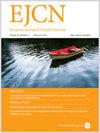成人补充人体测量指标与全因死亡风险之间的关系:Nhanes 2011-2016。
IF 3.6
3区 医学
Q2 NUTRITION & DIETETICS
引用次数: 0
摘要
背景:以往使用单一肥胖指标的研究无法全面评估体形与死亡率之间的关系。我们旨在研究补充人体测量指标与全因死亡风险之间的关联:我们将 2011 年至 2016 年的美国国家健康与营养调查(NHANES)数据与截至 2019 年 12 月 31 日的死亡率数据相结合。在排除基线癌症患者后,共纳入 13728 名参与者。采用Cox回归模型和限制性立方样条曲线(RCS)分析来探讨全身肥胖、中心性肥胖和外周脂肪指标与全因死亡风险之间的关系:在中位 5.83 年的随访期间,共有 743 人死亡。在经多变量调整的Cox模型中,腰围(WC)每增加10厘米、腰围与身高比(WHtR)每增加0.1个单位、A体形指数(ABSI)每增加0.01个单位,全因死亡风险分别增加20% (HR = 1.20; 95% CI: 1.02-1.41)、119% (2.19; 1.70-2.83)和5% (1.05; 1.03-1.08)。相反,中臂围(MAC)每增加 1 厘米,死亡风险就会降低 13% (HR = 0.87; 95% CI: 0.83-0.92)。与正常组(体重指数(BMI):18.5- 结论:体重过轻、3 级肥胖和中臂周长(MAC)增加与死亡风险降低有关:体重不足、3 级肥胖和中心性肥胖与死亡风险增加有关,而外周脂肪与死亡率成反比。本文章由计算机程序翻译,如有差异,请以英文原文为准。


Association between complementary anthropometric measures and all-cause mortality risk in adults: NHANES 2011–2016
Previous studies using a single obesity indicator cannot fully assess the association between body shape and mortality. We aimed to investigate the association between complementary anthropometric measures and all-cause mortality risk. We combined National Health and Nutrition Examination Survey (NHANES) data from 2011 to 2016 with mortality data up to December 31, 2019. After excluding individuals with cancer at baseline, 13,728 participants were included. Cox regression models and restricted cubic spline (RCS) analyses were used to explore the association between general obesity, central obesity, and peripheral fat indicators and all-cause mortality risk. A total of 743 deaths occurred over a median follow-up of 5.83 years. In multivariable-adjusted Cox models, each 10-cm increase in waist circumference (WC), each 0.1-unit increase in waist-to-height ratio (WHtR), and each 0.01-unit increase in A Body Shape Index (ABSI) were associated with 20% (HR = 1.20; 95% CI: 1.02–1.41), 119% (2.19; 1.70–2.83), and 5% (1.05; 1.03–1.08) increased all-cause mortality risk, respectively. Conversely, each 1-cm increment in mid-arm circumference (MAC) was associated with 13% (HR = 0.87; 95% CI: 0.83–0.92) decreased mortality risk. Compared with normal group (body mass index (BMI): 18.5- <25.0), underweight (HR = 1.97; 95% CI: 1.12–3.45) and grade 3 obesity (1.37; 1.04–1.81) were at higher mortality risk. However, after further adjustment for WC, the effect of grade 3 obesity disappeared, and the RCS analyses for BMI changed from a J-shaped (P < 0.05 for non-linearity test) to a negative association (P < 0.01). Underweight, grade 3 obesity, and central obesity were associated with an increased mortality risk, while peripheral fat was inversely associated with mortality.
求助全文
通过发布文献求助,成功后即可免费获取论文全文。
去求助
来源期刊
CiteScore
10.60
自引率
2.10%
发文量
189
审稿时长
3-6 weeks
期刊介绍:
The European Journal of Clinical Nutrition (EJCN) is an international, peer-reviewed journal covering all aspects of human and clinical nutrition. The journal welcomes original research, reviews, case reports and brief communications based on clinical, metabolic and epidemiological studies that describe methodologies, mechanisms, associations and benefits of nutritional interventions for clinical disease and health promotion.
Topics of interest include but are not limited to:
Nutrition and Health (including climate and ecological aspects)
Metabolism & Metabolomics
Genomics and personalized strategies in nutrition
Nutrition during the early life cycle
Health issues and nutrition in the elderly
Phenotyping in clinical nutrition
Nutrition in acute and chronic diseases
The double burden of ''malnutrition'': Under-nutrition and Obesity
Prevention of Non Communicable Diseases (NCD)

 求助内容:
求助内容: 应助结果提醒方式:
应助结果提醒方式:


